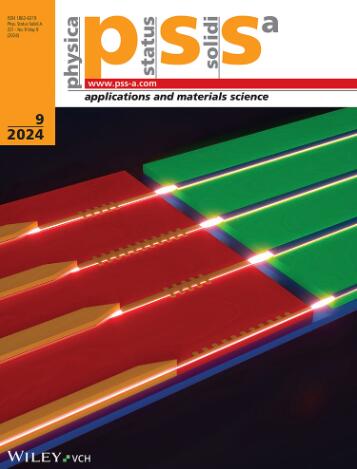用于高效太阳能电池的 Sby(S1-x,Sex)3 三元吸收器的最佳成分
IF 1.9
4区 材料科学
Q3 MATERIALS SCIENCE, MULTIDISCIPLINARY
Physica Status Solidi A-applications and Materials Science
Pub Date : 2024-07-22
DOI:10.1002/pssa.202400288
引用次数: 0
摘要
基于 Sb2(S1-x,Sex)3 三元化合物的太阳能电池与锑镓硒技术中的 Sb2Se3 和 Sb2S3 太阳能电池相比,显示出最高的效率值。然而,根据其带隙值或薄膜技术中传统太阳能电池的理论值,这些新出现的太阳能电池的记录效率仍远低于理论值。本文分析了在制造 Sby(S1-x,Sex)3 太阳能电池时可确保提高效率的最佳成分,并提出了一种新的合成方法,该方法可获得具有计算出的最佳成分的三元化合物。从理论上考虑,可以得到 Sb1.85(S0.63,Se0.42)3 的成分。该成分相当于最佳值 Se/(S + Se) = 0.4 和 Sb/(S + Se) = 0.88。本文介绍并讨论了新合成方法的结果。本文章由计算机程序翻译,如有差异,请以英文原文为准。
Optimal Composition of the Sby(S1−x,Sex)3 Ternary Absorber for High Efficiency Solar Cells
Solar cells based on Sb2 (S1−x ,Sex 3 ternary compounds have shown the highest reported efficiency value compared to their Sb2 Se3 and Sb2 S3 counterparts in antimony chalcogenide technology. However, the reported record efficiencies for these new emergent solar cells are still well below the theoretical values according to their bandgap value or for the traditional solar cells in the thin film technology. This article presents an analysis regarding the optimal composition that guarantees an increase in efficiency in the manufacture of Sby 1−x ,Sex 3 solar cells, as well as the proposal of a new synthesis method that allows obtaining the ternary compound with the calculated optimal composition. From theoretical considerations, a composition of Sb1.85 (S0.63 ,Se0.42 )3 is obtained. This composition is equivalent to optimal values Se/(S + Se) = 0.4 and Sb/(S + Se) = 0.88. The results of the new proposed synthesis method are presented and discussed.
求助全文
通过发布文献求助,成功后即可免费获取论文全文。
去求助
来源期刊
CiteScore
3.70
自引率
5.00%
发文量
393
审稿时长
2 months
期刊介绍:
The physica status solidi (pss) journal group is devoted to the thorough peer review and the rapid publication of new and important results in all fields of solid state and materials physics, from basic science to applications and devices. Among the largest and most established international publications, the pss journals publish reviews, letters and original articles, as regular content as well as in special issues and topical sections.

 求助内容:
求助内容: 应助结果提醒方式:
应助结果提醒方式:


